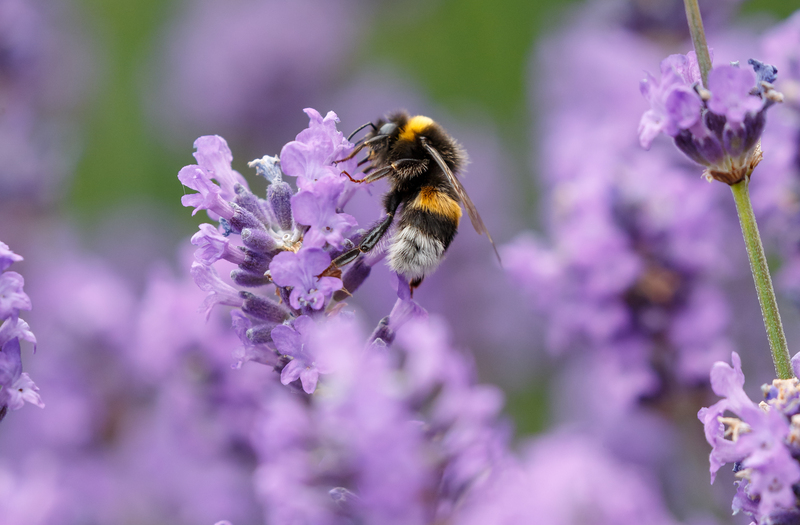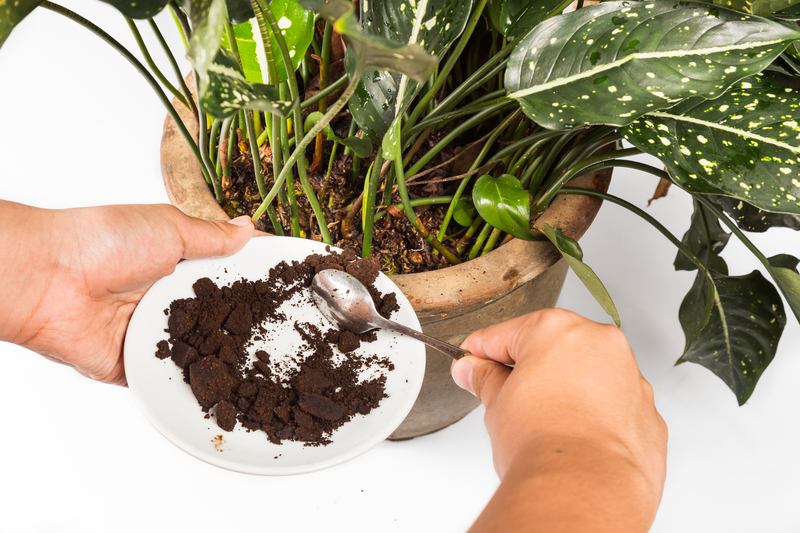Creating a Space Where Kids and Plants Thrive in Harmony
Posted on 15/09/2025
Creating a Space Where Kids and Plants Thrive in Harmony
Imagine a home filled with the laughter of children and the lush vibrancy of thriving plants. Designing environments that allow both kids and plants to flourish isn't just aesthetically pleasing--it's an investment in health, happiness, and lifelong environmental stewardship. Whether you have a sprawling backyard or a compact apartment, it's possible to create a space where children and plants coexist, learn, and grow together.
Why Kids Need to Be Around Plants
Integrating nature into your living space provides children with countless benefits, from improved mental well-being to hands-on education. Studies have shown that regular interaction with plants helps children:
- Develop empathy for living things
- Enhance creativity and problem-solving skills
- Reduce stress and boost concentration
- Learn about responsibility and ongoing care
- Appreciate the environment and develop stewardship values
By designing rooms where plants and kids thrive in harmony, you foster a nurturing atmosphere that supports children's emotional, cognitive, and physical growth--while adding beauty and tranquility to your home.

Understanding Kids and Plants: Safety, Interaction, and Education
Prioritizing Plant Safety
Safety comes first when designing a shared space for children and greenery. Many popular houseplants can be toxic if ingested or cause skin irritation, so it's essential to choose child-friendly plant varieties.
Safe plants for children include:
- Spider plants (Chlorophytum comosum): Easy to maintain and non-toxic.
- Areca palm (Dypsis lutescens): Adds a tropical vibe and is safe for kids and pets.
- Boston fern (Nephrolepis exaltata): Lush and air-purifying.
- Baby rubber plant (Peperomia obtusifolia): Non-toxic and compact.
- Prayer plant (Maranta leuconeura): Displays unique leaf movement and is safe to touch.
Avoid plants such as philodendrons, pothos, and peace lilies in play areas, as these can be harmful if chewed or touched by curious little hands.
Engaging Kids in Plant Care
Children thrive on hands-on activities. Involving them in small gardening tasks instills a sense of responsibility and pride. Consider these age-appropriate interactions:
- Watering plants using toddler-safe watering cans
- Wiping leaves gently to keep them dust-free
- Repotting with child-sized tools and gloves
- Recognizing plant growth by keeping a simple garden journal
- Decorating pots with paints or natural materials
These activities not only bolster fine motor skills but also create bonding opportunities for families to share in the joys of nature.
Designing a Harmonious Space for Kids and Plants
Choose the Right Location
When designing a space where plants and kids can thrive together, location is everything. Here are some tips for different living environments:
- Living Rooms: Utilize windowsills, corners, or vertical shelves to display child-safe houseplants. Create a cozy plant nook with cushions and books to encourage quiet nature time.
- Kitchens: Try a windowsill herb garden--let kids pick herbs for meals, promoting healthy eating habits and interactive cooking.
- Bedrooms: Place a couple of small, safe plants (such as spider or air plants) within easy sight. Always avoid placing tall or easily knocked-over plants in sleeping areas.
- Outdoor Spaces: If you have a yard, dedicate a corner for a child's vegetable or flower patch. Include raised beds or container gardens that make access easy for small children.
Creative Ideas for Shared Kid-Plant Spaces
Elevate your child-plant relationship with these fun and functional design ideas:
-
Plant Teepees or Play Forts:
Grow climbing beans, sweet peas, or morning glories around a bamboo frame to create a living hideout. -
Fairy and Dino Gardens:
Use shallow containers, succulents, and miniature toys to build themed indoor or outdoor gardens that are interactive and inspiring. -
Vertical Gardens:
Wall-mounted pocket gardens or vertical wood pallets keep plants out of high-traffic zones, saving precious play space and helping children observe plant growth at eye level. -
DIY Terrariums:
Invite children to assemble their own terrariums with moss, small ferns, and natural trinkets--a great project for rainy days.
Encouraging Outdoor Play and Nature Exploration
Garden spaces double as play zones, promoting physical activity and nature engagement. Set up:
- Exploration paths using stepping stones or log slices amidst garden beds
- Outdoor sensory tables featuring sand, soil, or water for experimental play
- Wildflower corners to attract butterflies and pollinators, sparking curiosity about insect life
- Rain gardens or mini-ponds (always supervised) to teach about water cycles and aquatic plants
Best Practices for a Kid- and Plant-Friendly Home
Incorporate Education Into Every Planting
Approach each gardening activity as a chance to learn together. Teach children about:
- Photosynthesis--watch the leaves reach for the sun
- The water cycle--observe how plants drink up rain or dew
- Different plant parts: roots, stems, leaves, and flowers
- The importance of pollinators (bees, butterflies, birds) in your yard
- Recycling and composting--create a mini compost bin and feed it with kitchen scraps
By weaving these lessons into daily routines, you foster a lifelong love of science and environmental care.
Fostering a Sense of Wonder--Every Season
Keep children intrigued by refreshing plant displays and engaging with the natural world year-round:
- Spring: Start seeds indoors in egg cartons or clear cups to observe root growth.
- Summer: Take care of fast-growing plants like sunflowers or marigolds. Plan evening "garden patrols" to spot new blooms.
- Autumn: Collect colorful leaves, make nature crafts, or set up a pumpkin patch corner.
- Winter: Focus on resilient indoor houseplants, or grow microgreens on a windowsill for fresh produce through cold months.
Making It Accessible and Inclusive
Ensure your kid-plant garden space is welcoming to all children, regardless of ability:
- Use raised beds or tabletop gardens accessible to wheelchairs or smaller bodies
- Install non-slip surfaces around wet planting areas
- Label plants with large, colorful signs for developing readers or kids with visual impairments
- Offer tactile experiences--plants with textured leaves, fragrant herbs, or edible crops
Inclusivity ensures every child can connect with nature and share in the nurturing work of gardening.
Dealing with Common Challenges
Managing Mess and Plant Damage
It's natural for dirt, water, and leaves to end up on the floor during enthusiastic play and plant care. Embrace the learning process with these strategies:
- Choose washable surfaces like tile, linoleum, or easy-to-clean mats in play and plant areas
- Keep a hand broom and child-sized dustpan nearby for quick clean-ups
- Set ground rules about gentle plant touching and explain why pulling leaves or stems can hurt the plant
- Opt for sturdy pots that resist tipping and cracking
Managing Allergies and Sensitivities
Some children may have allergies or skin sensitivities to certain plants or soils. To alleviate concerns:
- Test new plants by introducing one at a time and monitoring reactions
- Choose low-allergen plant options: ferns, palms, and succulents are less likely to cause allergic reactions
- Use organic, non-toxic fertilizers and pest control products
Maintaining Engagement Over Time
Children's interests evolve. Sustain excitement by introducing new plant varieties, projects, or responsibilities:
- Assign each child a dedicated "plant buddy" and rotate care tasks
- Host seasonal planting days or family competitions (who can grow the tallest sunflower?)
- Encourage leadership by having older children mentor younger siblings in plant care

Building Lifelong Healthy Habits
Creating a space where plants and kids can thrive together does more than beautify your home--it plants the seeds for a happier, healthier future. Gardening and plant care support:
- Emotional resilience--through nurturing another living thing
- Healthy eating habits--with homegrown fruits, herbs, or veggies
- Curiosity and exploration--by learning to observe and ask questions about the natural world
Ultimately, these shared experiences build stronger family bonds and a deeper commitment to caring for our planet.
Conclusion: A Home Where Kids and Plants Flourish Side by Side
When you make intentional choices about plant placement, species selection, and educational opportunities, you can create a vibrant, nurturing space where children and plants thrive together in harmony. This harmonious environment supports child development, strengthens family connection, and brings a slice of the natural world into your everyday life.
So why not start today? Gather your little ones, pick out some child-friendly plants, and turn your home into a leafy wonderland--one where curiosity blooms and every day is a chance to grow together.
Resources for Further Exploration
- Books: Roots, Shoots, Buckets & Boots by Sharon Lovejoy; Gardening Lab for Kids by Renata Fossen Brown
- Websites: KidsGardening.org; The Nature Conservancy Youth Engagement
- Local: Explore your local botanical gardens, extension offices, or family gardening clubs for community events and hands-on classes
With a little creativity and care, a world where kids and plants thrive together is within your reach!

